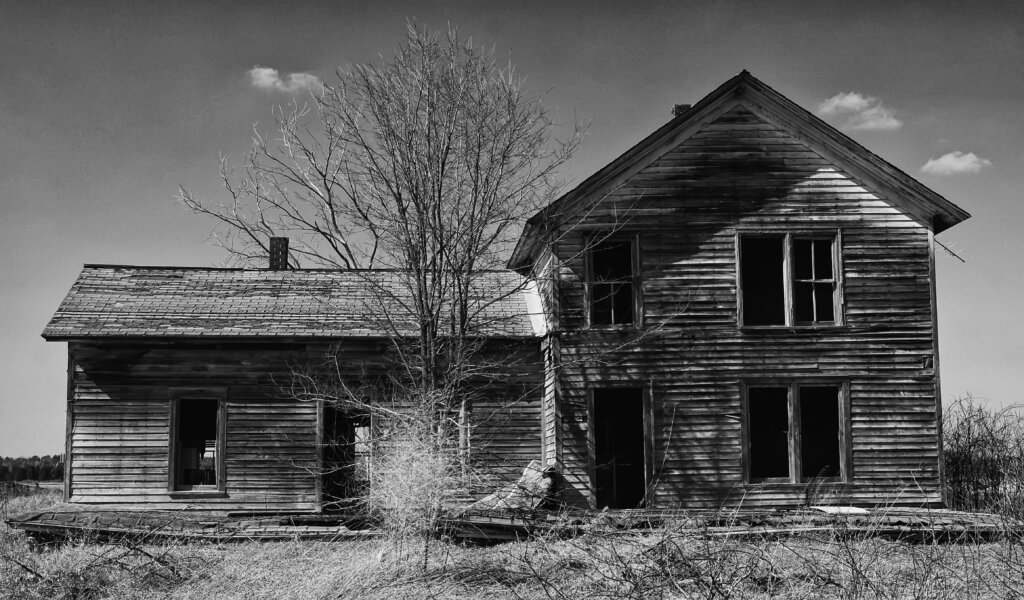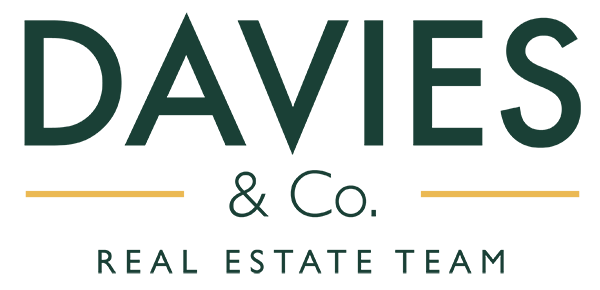Also called “what the heck is going on.”
If you’re reading this, you’re likely one of hundreds of thousands of Canadians who are either:
- Trying to get into the real estate market and gawking at mortgage rates or
- Worried about hikes in interest rates and your renewal coming up
This article is here to guide you through the financial landscape of what happened with mortgage rates in Canada over the past 4 years, how that impacted Canadians, and what to do if your mortgage term is up in the next year.
Pre-Pandemic Stability (Early 2020)
In the early months of 2020, Canadian mortgage rates were starting to increase from their lows of the previous 5 years. Fixed rates were getting close to 4% for the first time in a few years, which was considered “high” at the time, but definitely a more realistic interest rate compared to the 2-3% rates we had seen over the previous years. But Canadian consumers barely knew that was happening as once COVID hit rates came crashing down again . . .

The COVID-19 Impact on Mortgage Rates
The outbreak of the COVID-19 pandemic caused significant economic disruptions, prompting the Bank of Canada to lower its overnight lending rate multiple times throughout 2020. These rate reductions led to dropped mortgage rates as banks and lenders adjusted their rates to reflect the lower cost of borrowing.
Bank of Canada Governor Tiff Macklem said we had nothing to worry about in July 2020 after slashing interest rates to a record low, helping prompt a housing boom that led to Canadians racking up mortgage debt over the subsequent two years.
"If you've got a mortgage or if you're considering making a major purchase... you can be confident rates will be low for a long time," - Tiff Macklem, July 2020

Since then, the central bank raised the key interest rate to a 22-year high of 5% in July 2023. Now with more than $900 billion ($656.07 billion), or 60%, of residential mortgages at Canada's big banks likely to be renewed in the next three years, homeowners are panicking.
What does that mean?
Well, Canadians were confident they could take advantage of insanely low-interest rates, and a whole bunch of us took out big mortgages. Since then, we’ve seen TEN interest hikes – and people with variable rates are paying UP TO 80% higher than what they were paying before.
Variable vs. Fixed Rates
Variable mortgage rates, linked to the prime rate, became increasingly attractive in 2020 as the prime rate dropped.
Fixed mortgage rates also saw reductions in 2020 but remained slightly higher than variable rates during this period. During the pandemic, the average fixed term rate was close to 2.00% with some people getting rates closer to 1.5% for a 5 year term. For variable/adjustable rate mortgages most people were seeing discounts getting them close to or below 1% for a 5y variable rate mortgage.
James Laird, CEO of Ratehub.ca, said that even though fixed rates were also at record lows at the time – the variable rates were simply too good to pass on.
“During the pandemic, mortgage rates reached historic lows, some dropping as low as 0.85 per cent for a 5-year variable rate and 1.39 per cent for a 5-year fixed rate,” he said in the report. “Variable rates became more popular than usual, accounting for over 20 percent of mortgage rate inquiries.”
In short, Canada went wild. Today, based on Ratehub.ca’s report, fixed rates now make up 95 percent of inquiries and the data show increasing demand for shorter terms.
What does that mean?
Okay, say your mortgage is $500,000 and you were paying 1.5% on a 5 year term. Back in 2020 your payments were $1724/month with a total interest paid of around 35k. Except the rates hiked 10x in 2023 and now your variable rate is sitting at 5.5%. You’re now paying up $2819 and that same $500,000 mortgage will cost you 131,000k in interest.
So why else were people buying?
Despite the pandemic's economic challenges, the Canadian real estate market remained robust in many regions, Hastings County included. With need to be “in the city” at a complete standstill, city dwellers were saying tata to good old Toronto and Ottawa, and investing in their cottage-core dreams to live a quiet life by the lake.
More than 64,000 people left Toronto for other parts of Ontario from mid-2020 to mid-2021, up 14 per cent from the previous 12-month period, with another 6,600 moving out of the province.
What does that mean?
Our backyard was in demand. From Kingston to Port Hope and everything in between, we were the ultimate hot spot and out-of-towners just couldn’t get enough.
Vacant Home Tax
Legislation tried to mitigate the exodus of people leaving Toronto for greener pastures by passing a Vacant Home Tax in 2021. This tax essentially penalizes landlords and homeowners from leaving their home empty.
According to the city, the decision was meant to “help with the availability and affordability of housing stock on the market” and was expected to generate between $55 to $66 million in tax revenue per year.

Mortgage Rates Reality Check
In early 2021, there were indications of economic recovery and the Bank of Canada began signaling its intent to eventually raise interest rates. Some lenders started increasing fixed mortgage rates in response to these signals.
After two years of unprecedented lows driven by the COVID-19 pandemic, we witnessed a big and fast increase in interest rates starting from March 2022.
It started on March 2, 2022. After leaving its overnight lending rate at 0.25 per cent for two years the Bank of Canada raised interest rates 25 basis points up to 0.50 per cent. The decision to raise rates claimed to have come from rising inflation amid higher oil and commodity prices related to Russia’s sudden invasion of Ukraine.
In April, they spiked again.
By December 2022, interest rates had gone up every single month by at least 50 basis points, bringing the average rate up to 4.25 percent.
By July 2023, things stabilized at a soaring 5.0%.

What does that mean?
Many mortgage holders now face MUCH higher monthly payments, and those due for renewal must grapple with the prospect of significantly increased costs. The exact magnitude of this payment hike hinges on individual mortgage features and the trajectory of interest rates, which seem to be holding.
Impact on Pre-2022 Mortgage Rates:
By the end of November 2023, approximately 45% of mortgages taken out before interest rate hikes in March 2022, experienced payment increases.
The Bank of Canada hiked rates 10 times between March of last year and July 2023, pushing them up to a 22-year high of 5.00%. The inflation rate, which spiked to more than 8% last year, eased to 3.1% in October but is still above the bank's 2% target.
Looking ahead, nearly all remaining mortgage holders from this group (around 80%) are poised for renewal by the end of 2026.
What does that mean?
Well, Sherlock, people are scared. And many have a right to be. But it also doesn’t mean we’re without hope. *KEEP READING*
Bad News for 2021 Mortgage Borrowers & Variable Rate Contracts
Borrowers who secured mortgages in 2021, during the period of historically low rates, and those who opted for variable rates, based on the current landscape, are in trouble.
Among variable-rate mortgage holders, those with fixed payments who haven't taken proactive measures (see below!) to mitigate future increases will see their median payments surge by up to 80%. It's important to recognize that none of the predictions account for changes in borrower behaviors, such as making accelerated payments or transitioning to other mortgage products.
This is where you’ve got options.
Accelerated payments or transitioning to different products could help mitigate, though not entirely eliminate, payment increases.

If you have a variable or fixed rate term ending before 2025, here’s what to do NOW:
- Increase your payment now to whatever you can afford.
- Change your payment plan to “accelerated” bi-weekly or weekly which adds 1 extra monthly payment per year
- If at all possible, use investment funds, bonuses, or income tax returns to pay down your mortgage balance or other debts.
If you have a variable or fixed rate term ending before 2025, here’s what to do at the time of your renewal:
- Refinance to consolidate mortgage with other debts (car loans, credit cards) to have one lower payment
- Refinance to extend your amortization to bring your payment down
- Shop around and look at other lenders as rates can vary substantially
What Lies Ahead?
As we look ahead, it's crucial to acknowledge that mortgage payments are on the rise, and affordability will depend on various factors, including income growth. While most borrowers with income growth may not face severe financial stress, some may find the adjustments challenging. A severe recession or unexpected events could further complicate the picture.
Consult with a Mortgage Professional
Ultimately, understanding the evolving mortgage rate landscape and its potential impact is vital for responsible homeownership. At Davies and Co., we remain committed to helping you navigate these financial waters.
It’s why we work closely with our mortgage partners such as Colin Shea at Mortgage Alliance, to guide our clients towards healthy, financially stable decisions. Your financial well-being is our priority. Get in touch with Davies & Co. today and we'll help you make informed decisions for your future.







